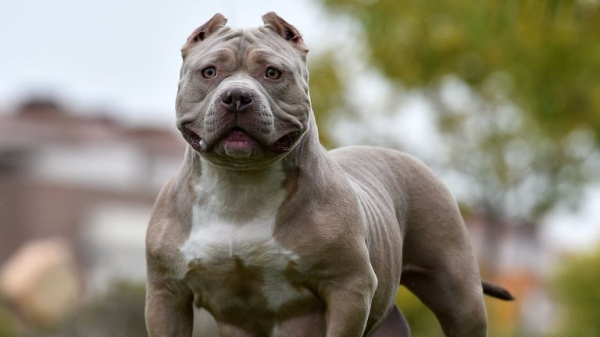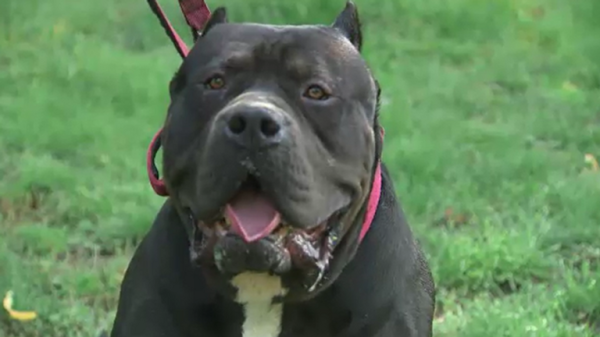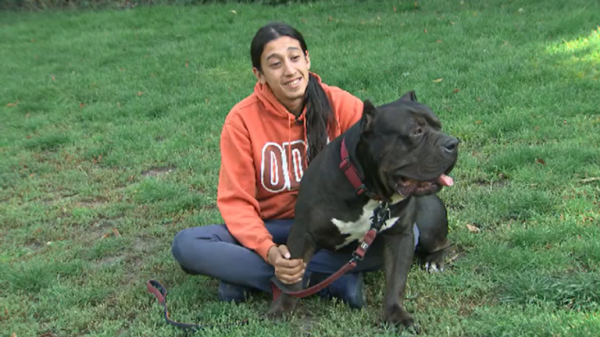XL bully dogs: Why adding the controversial breed to the Dangerous Dogs Act may not work

American XL bullys will be banned under the Dangerous Dogs Act, Prime Minister Rishi Sunak has said.
Mr Sunak declared the breed a “danger to communities” after a man died in a “suspected” attack by two of the dogs in Stonnall, Staffordshire, on Thursday afternoon.
A ban was already being looked at after video footage emerged of an attack in Birmingham last weekend that left an 11-year-old girl with serious injuries.
The dogs have been linked with several other attacks in recent months, including one near Wrexham in north Wales, in which 22 pregnant sheep were killed.
And earlier this year, Jonathan Hogg, 37, died after being attacked while looking after his friend’s dog, reported to be an XL bully.
They would be the fifth group of dogs banned in the UK – joining the pit bull terrier, Japanese tosa, dogo Argentino and the fila Brasileiro.
But despite the prime minister’s promises to “keep people safe”, one dog behaviourist has told Sky News it’s not as simple as just adding the dog breed to the legislation – because it’s not actually a breed of dog at all.

American XL bullys are ‘not a breed’ of dog
Debbie Connolly is an expert witness in court cases involving dangerous dogs who have injured other animals or people.
XL bully, a variation of the pit bull, was first seen in the 1990s as breeders sought to create a “bigger and stronger” version.
But they have no specific DNA markers, making them difficult to ban outright.
Ms Connolly said: “It is not recognised as a breed in this country and therefore you cannot simply write the words ‘XL bully’ at the end of the current dangerous dogs list.”
She says it is similar to pit bull terriers, which are also not a defined breed in law.
If a police officer suspects a dog may be a terrier, it is seized and compared to the American Dog Breeder Association Standard.
“There are 60-odd points of what a pit bull terrier should look like,” says Ms Connolly.
“The dog is measured, proportioned, how much bigger is its head than its chest, what does its tail look like? And subjective things like springy gait. So it is compared and the police make a decision as to whether that dog has a substantial number of the characteristics of a pit bull terrier.”
The result, she says, would mean expensive arguments in court to even decide if a dog fell under the category of American XL bully in the first place.
Ms Connolly says she has also seen “dogs of all breeds, shapes and sizes in court, some of whom have caused terrible injuries”.

A ‘uniquely dangerous’ dog
Dr Lawrence Newport has been tracking the alarming rise in fatal attacks by XL bullys – and says the dogs are “uniquely dangerous”.
“I don’t blame the dogs any more than I blame a pointer for pointing at stuff, it is just what they were meant to do,” the law lecturer says, explaining how the dogs had been bred for fighting, and then repeatedly inbred over 30 years.
During his research, he found one dog that had the same grandfather four times over – more inbred than if its parents had been siblings.
While some critics say breed-specific-legislation doesn’t work, Dr Newport says: “You can have a great dane that is huge, 80kg, but you can’t find a single example of one that has killed anyone in the UK.
“It is not about size, it is not about jaw strength, it is about breeding and what the dog has been bred to do.”
He says if a ban is not brought in “more children will die, more people will be maimed and more dogs will die”.
Dogs are one of the biggest victims of the XL bully.
“In one week in July this year, there was one dog killed every day by an American bully,” says Dr Lawrence. “They were ripped to shreds and others given injuries they can never really recover from.”
Twitter This content is provided by Twitter, which may be using cookies and other technologies. To show you this content, we need your permission to use cookies. You can use the buttons below to amend your preferences to enable Twitter cookies or to allow those cookies just once. You can change your settings at any time via the Privacy Options. Unfortunately we have been unable to verify if you have consented to Twitter cookies. To view this content you can use the button below to allow Twitter cookies for this session only. Enable Cookies Allow Cookies Once
‘The good, the bad and the ugly’
Mark Riley found Rocky’s Army after a friend’s pit bull was seized under the Dangerous Dogs Act. The dog was eventually granted an exemption, but he now supports other owners who are facing the destruction of their pets.
Some of those supported by the group have had their dogs seized and destroyed – in one instance, set on fire – without the owner’s consent. Often, they don’t find out their dog has been killed until weeks later.
Many of these dogs, Mr Riley says, had not bit or injured anyone, but were destroyed purely because of their breed.
A dog can be given an exemption under the Dangerous Dogs Act – if the owner can prove to a court it is not dangerous.
Mr Riley says there are currently 3,500 dogs on the exemption register.
“Every single breed of dog has the good, the bad and the ugly. Banning a full breed because of what some have done is not right,” says Mr Riley.
He says a register of all dog breeds would be the only way to know for certain if one type of dog is causing more injuries.
The current law, he says, doesn’t work for anyone on either side of the debate.
“We should have a dangerous dogs act, we do need that, but a banned list doesn’t work,” he said.
What happens when a dog is banned?
If a type of dog is added to the banned dogs list, it means it is illegal for anyone in the country to own, breed, or sell them.
Currently, four breeds are on the list: the pit bull terrier, Japanese tosa, dogo Argentino and fila Brasileiro.
Anyone found with a banned dog can have their pet removed by the police or local council dog warden, even if it has not been acting dangerously and there has been no complaint made.
The government’s website states that if the dog is in public when police see it, they do not need a warrant to remove it, but if it is on private property they require a warrant.
However, if the dog is found in a private place while the police have a warrant for something else, they can also seize the animal.
If a dog is taken by police it will be judged by a council dog expert to determine whether “it is or could be a danger to the public”, at which point it will either be released back to you or kept in kennels while the police apply to a court.
After that, it is the owner’s responsibility to prove in court that the dog is not a banned type.
The government website states: “If you prove this, the court will order the dog to be returned to you. If you cannot prove it (or you plead guilty), you’ll be convicted of a crime. You can get an unlimited fine or be sent to prison for up to 6 months (or both) for having a banned dog against the law. Your dog will also be destroyed.”
There are exemptions to the banned dogs rule, however. If a dog is a banned breed but the court does not believe it to be a danger to the public, it may be put on the Index of exempt dogs, which will allow the owner to keep it.
If this happens the owner will be given a certificate of exemption that is valid for its whole life – but will have to follow stringent handling rules.
The pet must be neutered, microchipped, kept in a secure place, and kept on a lead and muzzled at all times while in public.
Insurance against the dog injuring other people is also mandatory and the owner must produce a eertificate of exemption when asked by police or the council within five days of being asked.

What the RSPCA says about XL bullys
“Breed is not a reliable predictor of aggressive behaviour in dogs,” the animal welfare charity told Sky News.
“Every dog has the potential to bite. As we look to reduce dangerous dog incidents, we need solutions that promote responsible pet ownership. Tough sanctions for those who wilfully use dogs to frighten and intimidate people and other animals will also be key.”
